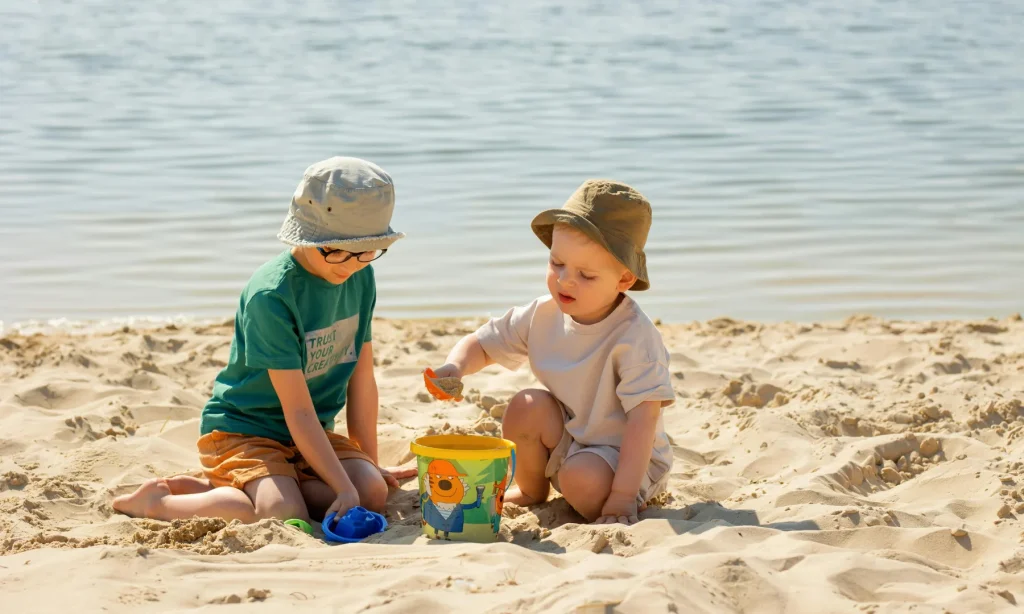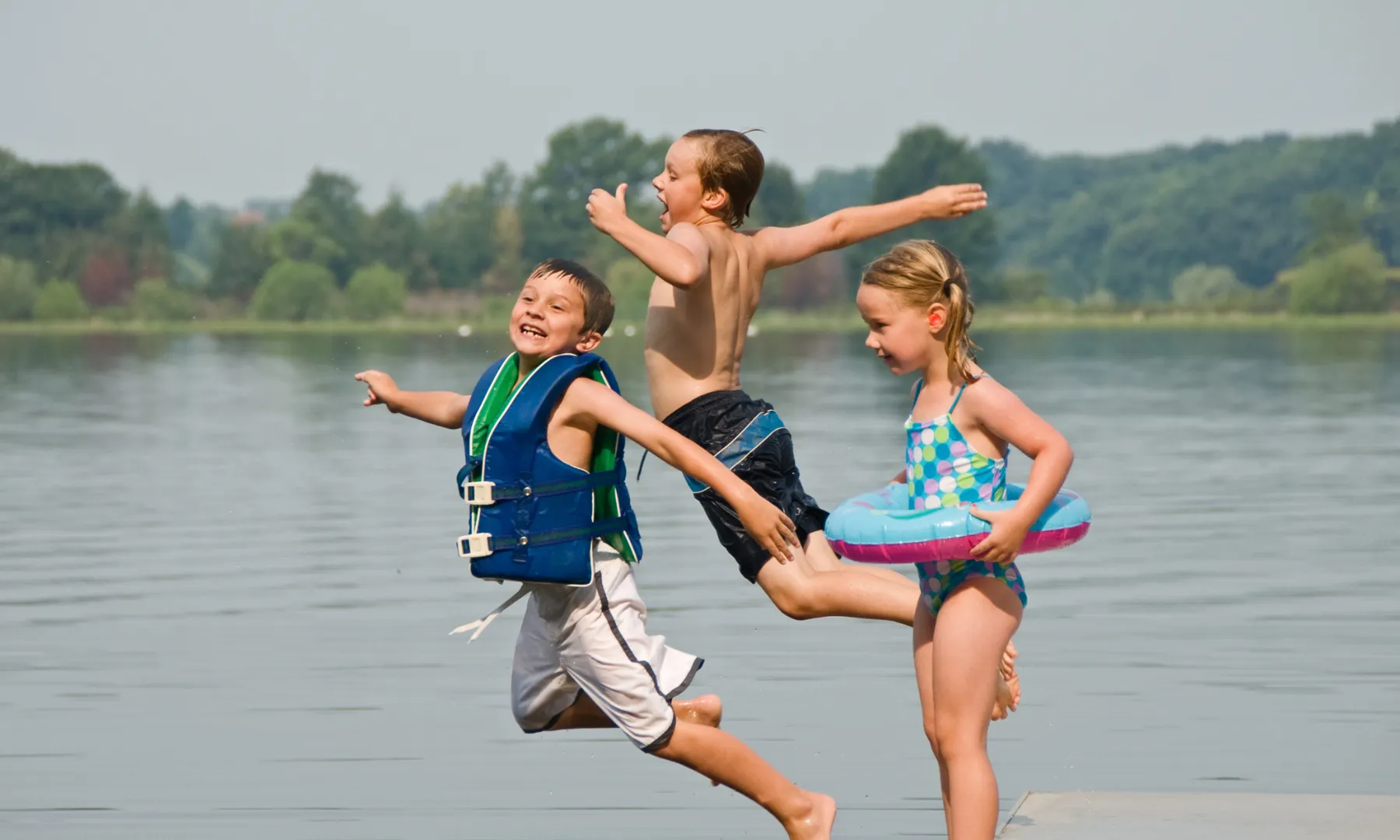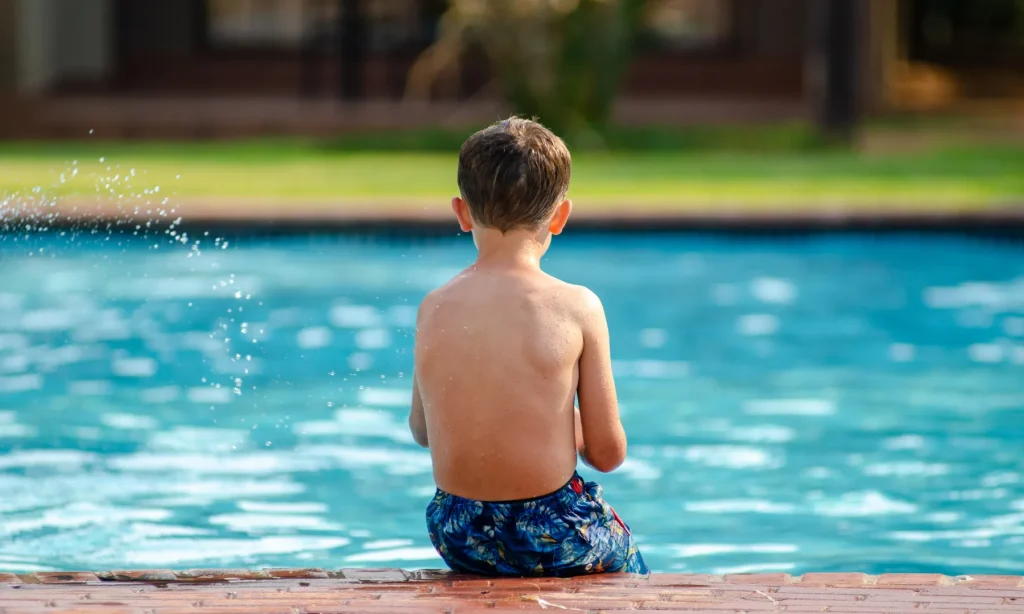Every summer, without fail, I hear the same desperate cry from parents in my practice:
“Dr. Gibson, we were doing so well all winter and spring… and now the tics are back with a vengeance. What’s happening?!”
If this is your story, take heart. You’re not imagining things, and you’re certainly not alone.
For many children with tic disorders, summer brings a frustrating setback. Families work tirelessly to stabilize their child’s nervous system, only to watch progress unravel once school’s out and pool season begins.
After years of seeing this seasonal pattern, I can tell you the culprit isn’t random — and it’s not “all in your head.” One of the biggest, least-discussed triggers?
Chlorine.
The Summer Culprit Few Parents Suspect
Most of us think of chlorine as a simple pool disinfectant. But for children with hypersensitive nervous systems, chlorine isn’t harmless. It’s a chemical irritant with the power to spark real, measurable neuroinflammation.
This inflammation directly affects the circuits that regulate movement and behavior — the very pathways involved in tics, impulsivity, and emotional regulation.
And before you say, “But we only use the saltwater pool at the club,” here’s the truth: most saltwater pools still generate chlorine from salt. In fact, my own testing has shown some “saltwater” systems running with higher chlorine levels than standard pools.
So whether it’s the neighborhood pool, camp swim lessons, or even a backyard saltwater system — chlorine is still in play.
Why Summer Magnifies Tic Symptoms
During the school year, many kids might hit the pool once a week for lessons or recreation. In summer? That often jumps to hours per day, multiple days per week.
This sudden surge means:
- Skin absorption of chlorine through prolonged contact.
- Inhalation of chloramines — chemical byproducts that hover just above pool water.
- Cumulative exposure in a developing nervous system that is already sensitive.
For a child with a nervous system on high alert, this isn’t a small stressor. It’s like pouring gasoline on a fire.
Parents tell me, “Swimming is the only exercise my child loves!” I get it. But I’ve seen countless cases where tic-free months suddenly collapse into severe flares within just a week of daily swim camp. The connection is too strong to dismiss.

Other Summer Triggers Beyond Chlorine
While chlorine is the most consistent factor, several secondary summer triggers also contribute to tic regression. Addressing them strengthens your strategy.
- Heat and Dehydration
- Dehydration stresses the nervous system, making it harder to regulate.
- Heat itself can trigger inflammation and fatigue.
- Dehydration stresses the nervous system, making it harder to regulate.
- Allergens
- Summer brings spikes in pollen, mold, and grass exposure.
- Allergic responses create immune activation — another inflammatory pathway that aggravates tics.
- Summer brings spikes in pollen, mold, and grass exposure.
- Infections
- Public pools aren’t just chemical baths — they’re pathogen hotspots.
- Viruses, bacteria, and parasites like cryptosporidium or enterovirus spread easily in crowded swim environments.
- For a child with immune dysregulation, even a mild infection can spark a massive inflammatory cascade.
- Public pools aren’t just chemical baths — they’re pathogen hotspots.
- Sleep Disruptions
- Summer often means later bedtimes, irregular routines, and less restorative sleep.
- A tired brain is an inflamed brain — and tic symptoms thrive in that environment.
- Summer often means later bedtimes, irregular routines, and less restorative sleep.
By recognizing these layered summer stressors, you can start to untangle why your child’s symptoms feel so much worse in July than in January.
What I Recommend to Families (A Practical Game Plan)
I am not here to be the “fun police.” I believe kids need joy, social connection, and exercise. But when it comes to tic disorders, we need to balance childhood fun with neurological safety.
Here’s my practical framework:
- Limit Pool Time
- Instead of marathon afternoons, aim for 30–45 minutes of swim.
- Watch your child closely: if tics increase after pool sessions, cut back.
- Instead of marathon afternoons, aim for 30–45 minutes of swim.
- Immediate Showering
- Don’t let kids “air dry” on the pool deck.
- Rinse thoroughly with soap within minutes of leaving the water.
- Don’t let kids “air dry” on the pool deck.
- Vitamin C Spray
- Mix ascorbic acid with water in a spray bottle.
- Vitamin C neutralizes chlorine on skin instantly.
- Families report this as a game-changer for reducing post-swim flares.
- Mix ascorbic acid with water in a spray bottle.
- Alternative Water Fun
- Sprinklers, filtered kiddie pools, slip ’n slides, and water balloons offer safe, fun summer play without the chemical load.
- Sprinklers, filtered kiddie pools, slip ’n slides, and water balloons offer safe, fun summer play without the chemical load.
- Supportive Nutrition & Supplements
- Hydration with electrolytes
- Omega-3 fatty acids (anti-inflammatory)
- Magnesium (calming for the nervous system)
- Vitamin C & E (antioxidants that help counter oxidative stress)
- Hydration with electrolytes
- Trust Your Gut
- If you notice your child spiraling after swim days, believe what you’re seeing.
- If you notice your child spiraling after swim days, believe what you’re seeing.
Parents often know before labs or doctors do.

The Hard Truth: Sometimes You Need to Skip the Pool
Some children can tolerate short, carefully managed exposure. Others can’t.
The hardest truth for many families is this: sometimes the safest choice is to step away from chlorine entirely, at least during sensitive periods.
- Safer options include natural swimming holes, lakes (with proper safety checks), or backyard pools equipped with advanced filtration systems.
- Some families decide pool season just isn’t worth the regression — and instead focus on alternative summer fun.
Protecting your child’s healing brain may mean making tough choices.
Moving Forward: Helping Your Child Thrive
Every child is different. Some will tolerate 20 minutes a week in a well-maintained pool; others may flare with even minimal exposure.
The goal isn’t just symptom management. It’s long-term brain health and resilience.
When you view summer through the lens of triggers — chlorine, infections, allergens, heat — you can make smarter, more protective decisions.
It can also be helpful to consult a functional medicine expert who specializes in tic disorders. They can provide deeper insight into your child’s unique triggers and offer strategies tailored to their individual needs. With the proper guidance, you’ll feel more confident taking steps to manage your child’s tics.
And remember: if your child’s tics worsen every summer, you’re not crazy, and you’re not alone. The pattern is real. The connection between chlorine, neuroinflammation, and tic disorders is documented. And with the right strategies, your child can still enjoy summer while protecting their progress.
Related Reading
- Tic Disorders and Swimming: What Parents Need to Know – our foundational guide to swimming-related tic triggers year-round.
- Ultimate Tic Disorder Guide – a practical, downloadable action plan for families.
If you are ready to dig deeper into your child’s tic disorder, click here and start with the Tic Disorder Cheat Sheet.
Frequently Asked Questions on Summer Tics & Chlorine
Not necessarily. Most saltwater pools still generate chlorine from salt, and some run with even higher chlorine levels than standard pools.
Yes, many families find lakes or natural swimming holes to be gentler options. Always consider safety (depth, bacteria, supervision).
Yes, ascorbic acid neutralizes chlorine on contact. A quick spray after swimming, followed by a proper shower, can dramatically reduce chlorine load.
Hot tubs often have even higher chlorine or bromine concentrations than pools. For sensitive children, they’re best avoided.
Absolutely. Anti-inflammatory nutrition, hydration, and supplements like omega-3s, magnesium, and antioxidants help buffer the impact of chlorine and heat stress.
References:
[1] Richardson JR, Fitsanakis VA, Westerink RH, Kanthasamy AG. Neurotoxicity of Chlorine: Oxidative Stress and Neuroinflammatory Pathways. PMC https://pmc.ncbi.nlm.nih.gov/articles/PMC3136961/
[2] Ralston L, Milne S, Gao J, Rullo J, Khan NA. Environmental Triggers and Neuroinflammation. PMC https://pmc.ncbi.nlm.nih.gov/articles/PMC7220003/
[3] Yang T, et al. Swimming Pool Attendance and Risk of Neurological Symptoms. PLOS ONE https://journals.plos.org/plosone/article?id=10.1371%2Fjournal.pone.0193848
[4] Bernard A, Carbonnelle S, Dumont X, et al. Chlorinated Pool Attendance, Atopy, and the Risk of Asthma During Childhood. Environmental Health Perspectives (2006).
[5] Weisel CP, Jo WK. Inhalation exposure to chlorination by-products of indoor swimming pools. Environmental Health Perspectives (1996).

